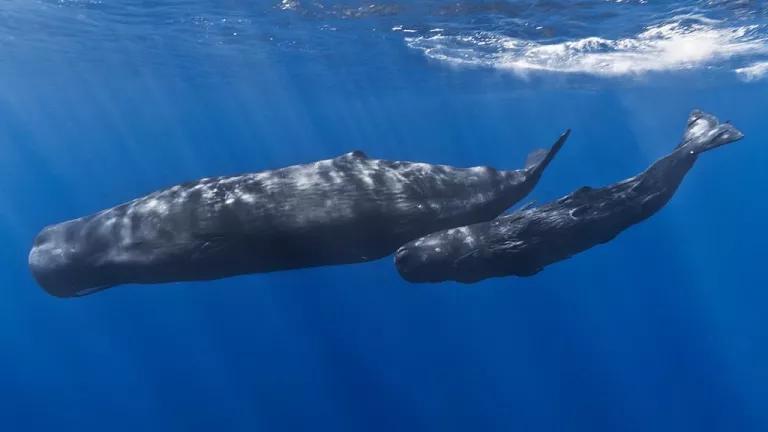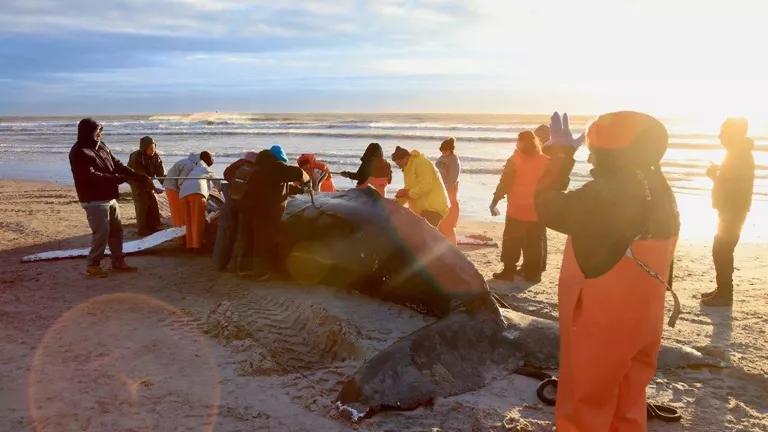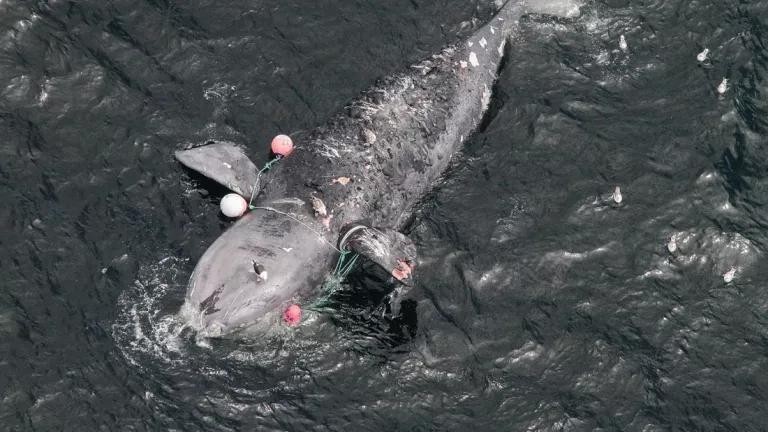
On Friday, a ruling in NRDC’s latest sonar case came down from the Ninth Circuit, the federal court of appeals that presides over most of the western United States. It was a major victory, and not only for marine mammals, but for the law that protects them.
The case concerns the Navy’s SURTASS LFA sonar system, a technology whose powerful, low-frequency signals can impact some marine mammal species—disrupting their ability to feed, breed, and communicate—over hundreds of miles. In 2012, the Navy asked the National Marine Fisheries Service for a global permission slip: It wanted the Service’s OK, under the Marine Mammal Protection Act, to harm endangered whales and other species across more than 70 percent of the world’s oceans. NRDC, the U.S. Marine Mammal Commission, and others urged the agency to take a precautionary approach, especially in the vast reaches of the ocean where little is known. Yet in the end the Service gave the Navy a virtual blank check, declining to protect habitat in most regions.
At stake in the Service’s decision was the law’s mitigation provision, the requirement that the agency prescribe measures resulting in the “least practicable adverse impact” on marine mammals before issuing any permit.
According to the Service, too little was known about marine mammal distribution in most parts of the world to warrant protection of their habitat. But the agency’s own experts, the very ones it had appointed to identify habitat for protection, disagreed. “Proven ecological principles,” they wrote, could be used to identify areas of likely importance, and they outlined a precautionary approach to protect islands and seamounts, as well as productive deep-water areas that are associated with sperm whales.
No doubt the experts’ approach would have swept in some areas of lesser importance and thus been overprotective; but the alternative embraced by the agency had the opposite effect. It left out a good deal of important marine mammal habitat, presuming in effect that no such habitat exists through the greater expanse of the Navy’s worldwide operating area. Before the Ninth Circuit, the Service argued that its view of the matter was entitled to deference; the court, however, saw that the agency’s “systematic underprotection of the marine mammals” (the court’s words) could not be squared with a law that demands the least impact practicable.
This is not the first time a federal court has ruled against the Service on LFA sonar. In 2003 (NRDC v. Evans) and again in 2008 (NRDC v. Gutierrez), the courts found that the agency’s mitigation measures had fallen far short of what the law requires. There, too, the Service gave the Navy worldwide clearance while refusing to protect areas that marine mammals depend on to feed, breed, nurse, and rest; and there, too, it tied itself in legal knots to do so.
But the improper positions it took in the present case—among them, the impossibly high burden of proof it put on science to justify mitigation—are by no means limited to LFA. The agency has set a similarly high bar for habitat protection on the Navy’s offshore ranges, where the military trains with tactical mid-frequency sonar and with explosives; and the measures it routinely prescribes for offshore oil and gas exploration and offshore construction hardly recognize, as the court does for Navy sonar, the “paramount importance” of habitat protection. It seems unlikely that the Service’s proposal to authorize seismic airgun surveys in the Atlantic—which is waiting in the wings—could possibly move forward without careful reconsideration. Meanwhile, the LFA case itself is being remanded to the lower court, to consider what relief should be granted.
Together with last year’s major court victory on Navy training off Southern California and Hawaii, and with last month’s announcement, by NOAA, of a new Ocean Noise Strategy, the Ninth Circuit’s decision ought to be one of those milestones that alter the agency’s course for good. We shall see.



